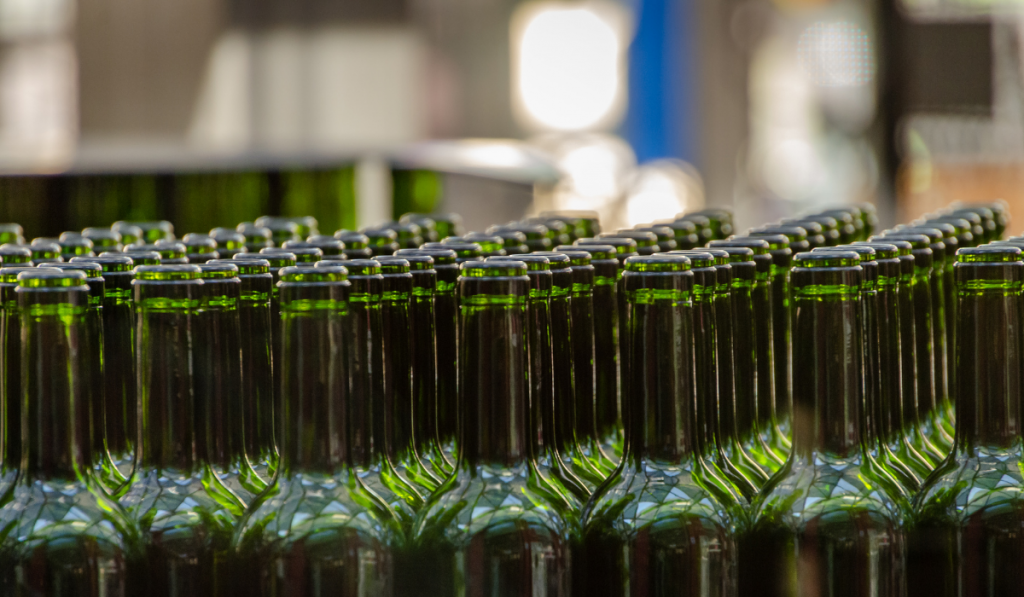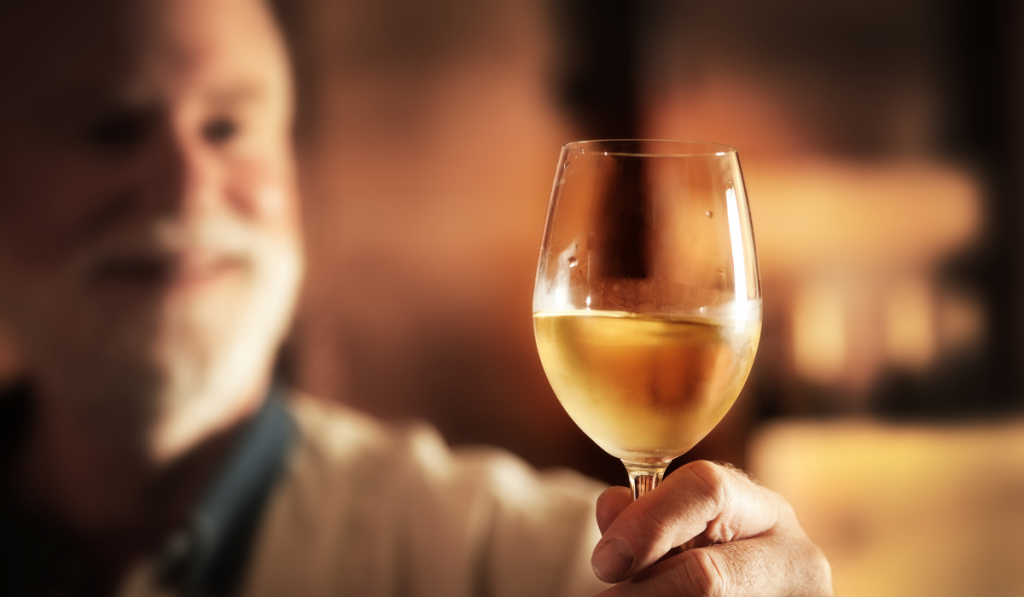By Katherine Thompson-Witrick
Since the Neolithic era, humans have utilized the fermentation process as a means of extending the shelf life, increase the safety, and produce desirable flavors for foods and beverages. Beer and wine have been around for tens of thousands of years. The discovery of wine was likely a happy accident when a forgetful farming accidently allowed their grapes to ferment in a storage vessel. The rest is history.
Wine, like other fermented beverages, is a complex product, primarily composed of water (80–85%), alcohols (9–15%, ethanol being the major one), and other minor components (3%). Wine flavor is a composed of a number of volatile compounds and a delicate balance of sweet (sugars), sour (organic acids), and bitterness/astringent (polyphenols). The flavor and aroma of wine depends on the grape varietal(s) used, growing conditions (soil type, climate), and wine making practices including wine aging and storage conditions. Therefore, the consumer experience can be greatly affected by the packaging, transport, and storage conditions.
The purpose of food packaging is to protect and preserve the quality of the food or beverage from outside forces like oxygen, light, and moisture. The package should also be inert with respect to flavor migration from the package to the product or sorption of flavors from the product to the package (flavor scalping). One of the primary parameters that affect wine through the aging process is the transfer of gases through the packaging materials, hence why the type of packaging will have a considerable impact on the extent of wine oxidation and the loss of other sensory properties.

Glass is preferred over other materials due to its historical use, transparency and being easily recyclable. It has a highly impermeability to gases and vapors and stability over time. Glass containers are traditionally utilized as the control when it comes to accelerated shelf-life studies for wine. Ghidossi et al. 2012 analyzed the physical and chemical properties of different packaging types (glass bottles to PET (0.3 mm and 0.4 mm thickness) and BIB) over an 18-month period. The researchers found clear differences at the 6 and 18 months regarding the chemical and physical analysis of the white wine, it was apparent that the glass bottles were superior in terms of limiting gas transfer (O2, CO2), maintaining SO2 content, and protecting color intensity and sauvignon character for white wine in comparison to the other packaging types. Glass was found to be superior to the other packaging designs having the lowest concentration of oxidative flavor markers phenylacetaldehyde, methional, and sotolon all of which were below their perception threshold levels.
Another increasingly important packaging method is bag-in-box. A major downside to BIB packaging is that the polyolefinic (polyethylene, polypropylene) film comes in contact with the wine. Polyolefinic films have a strong capacity to absorb the volatile and semi-volatile compounds from the wine resulting in flavor deterioration. The film used for this type of packaging has a sorption rate for non-polar compounds due to the hydrophobic nature of the polyolefins. Revi et al. 2014, conducted a study comparing the impact wines packaged in bag-in-box (low density polyethylene–LDPE and ethylene vinyl acetate–EVA) vs. traditional glass had on the enological parameters as well as the volatile and semi-volatile compounds over a six-month period. Wine deterioration was most pronounced when stored in the bag-in-box pouches due to the sorption of flavor compounds into the polymeric packaging material. However, between the different types of pouches used the LDPE lined pouched had the highest potential for flavor sorption. It should be noted that when comparing sensory acceptability, consumers felt that after 90 days, the wine was unacceptable. Moreira et al. 2016 found similar results when looking at the influence wine packaging and aging had on the volatile and sensory attributes of red wine. Due to the higher permeability of the bag-in-box design, wine should be consumed quickly and not aged.

Mentana et al. 2009 conducted a study looking at the chemical and physical changes of Apulia table wine packaged in two different types of PET bottles (PET and Oxygen scavenging PET (OxSC-PET). The flavor and aroma profile for red wines was analyzed following the completion of the storage period. The study concluded that there was a significant loss in a number of organic compounds including alcohols, acids, and esters for wines stored in PET bottles. Mentana et al. reported the loss of a number of these compounds to scalping by the PET bottle. However, OxSc-PET showed flavor scalping to a lesser extent than the regular PET bottle.
Within canned beverages, there is a greater concern for sensory/flavor deterioration caused by degradation, scalping, or tainting than microbial spoilage. Oxidative deterioration is one of the biggest causes of flavor degradation in wine. To slow oxidative deterioration, wine makers add between 20–40 mg/L of free sulfur dioxide (SO2) to their packaged wine. Oxidative aromas, colors, and other signs of deterioration start to become apparent when free SO2 levels are below 10 mg/L. Non-polar flavor and aroma compounds are affected the most because they have the capacity to be absorbed into the non-polar polymer packaging materials. Scalping has not been studied in canned wine products and leaves an area for future research. Scalping has been thoroughly studied in beer, strictly focusing on the aroma active non-polar hop compounds like limonene. Although, limonene is found in wine below detectable threshold levels, 1,1,6-trimethyldihydronaphthalene (TDN), rotundone, and 2,4,6-trichloroanisole (TCA aka “cork taint”) are potential compounds that could be scalped by the can’s lining during storage. Without further research wineries won’t know how their wine will react when packaged in a can. In recent blind tastings, more than a dozen canned wines scored between 85–90 points (Very good) on the Wine Spectator’s 100-point scale. Gone are the days of packaging lower quality wine in aluminum cans, people are interested in purchasing aluminum cans because of their recyclability, and convenience.
Read all at: https://www.mdpi.com/2306-5710/7/2/36

Katherine Thompson-Witrick
Asst. Professor, Food Science and Human Nutrition Department, University of Florida
email: kthompsonwitrick@ufl.edu
CV here

